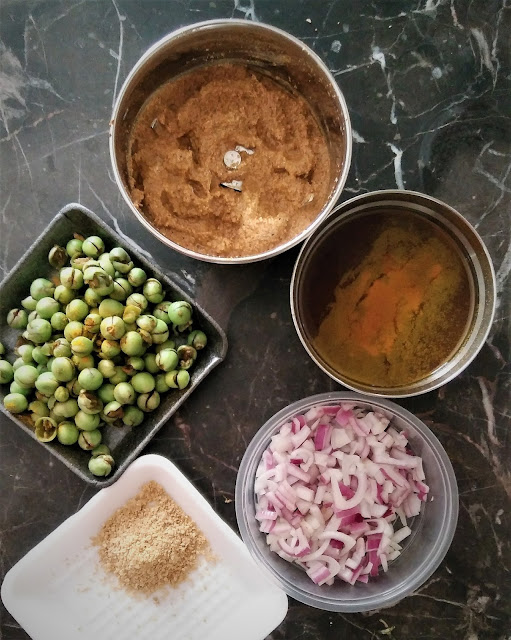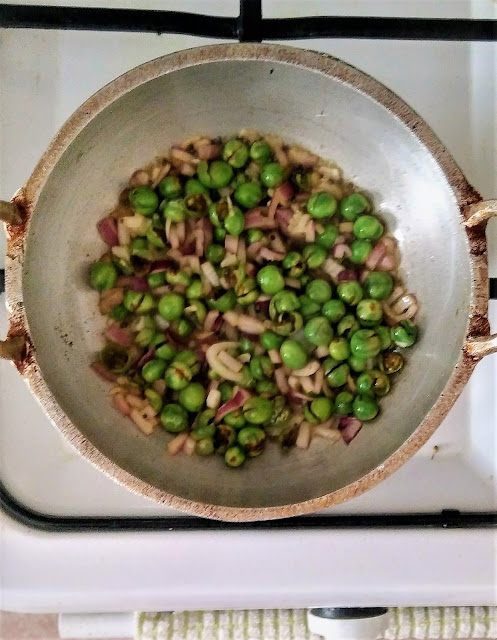I seem to have fallen into a pattern of neglecting this space and giving excuses for that. However, my husband and daughter do not agree and push me hard enough to post here once in a few months or so. They try hard to coax me to make an attempt to keep this going.
My daughter, especially, goes that extra step to persuade me by sharing her cooking and baking. This is one such post that was 100% hers. She baked this cake a few days ago for their weekend snack and shared her photographs. They were so eye catching that I asked her to make a blog to be put up here.
She said that when they moved to the new city and she was still getting her home in some order, she wanted to do something enough to break the boredom. While she was looking through recipes to bake, the Battenberg cake caught her fancy. Since they both like chocolate and the flavour of coffee, she alternated for the traditional bright colour layer with the brown checkers.
Known by many names, like church or chapel window cake, chequerboard cake and domino cake, the Battenberg cake is said to have been named in honour of the marriage of Princess Victoria, grand daughter of Queen Victoria to prince Louis of Battenberg in 1884. However, there are some early examples of this that go by a variety of names. The Neapolitan roll, a similar cake contains more squares than four.
The American version of the battenberg cake is the checkerboard cake that gets the name because while sliced it resembles the board of the game. a typical one alternates vanilla sponge and a chocolate cake and is covered with rich chocolate buttercream icing.
My daughter made the cake as well as the marzipan without eggs. For the cake, she followed this recipe posted here sometime ago. she used the recipe for one cake but divided it in two half cakes to make the layers. She had used parchment to separate the cake batters and baked them in one cake tin. She said she was not able to take pictures of the process.
I found Traditional Battenberg in Mandi Mortimer's Blog very descriptive, with pictures of how to bake, layer and roll in the marzipan, the post is very helpful.
Battenberg Cake - No Eggs Recipe
The following is my daughter's mail that I have copied verbatim
My daughter, especially, goes that extra step to persuade me by sharing her cooking and baking. This is one such post that was 100% hers. She baked this cake a few days ago for their weekend snack and shared her photographs. They were so eye catching that I asked her to make a blog to be put up here.
She said that when they moved to the new city and she was still getting her home in some order, she wanted to do something enough to break the boredom. While she was looking through recipes to bake, the Battenberg cake caught her fancy. Since they both like chocolate and the flavour of coffee, she alternated for the traditional bright colour layer with the brown checkers.
Known by many names, like church or chapel window cake, chequerboard cake and domino cake, the Battenberg cake is said to have been named in honour of the marriage of Princess Victoria, grand daughter of Queen Victoria to prince Louis of Battenberg in 1884. However, there are some early examples of this that go by a variety of names. The Neapolitan roll, a similar cake contains more squares than four.
The American version of the battenberg cake is the checkerboard cake that gets the name because while sliced it resembles the board of the game. a typical one alternates vanilla sponge and a chocolate cake and is covered with rich chocolate buttercream icing.
My daughter made the cake as well as the marzipan without eggs. For the cake, she followed this recipe posted here sometime ago. she used the recipe for one cake but divided it in two half cakes to make the layers. She had used parchment to separate the cake batters and baked them in one cake tin. She said she was not able to take pictures of the process.
I found Traditional Battenberg in Mandi Mortimer's Blog very descriptive, with pictures of how to bake, layer and roll in the marzipan, the post is very helpful.
Battenberg Cake - No Eggs Recipe
The following is my daughter's mail that I have copied verbatim
This recipe is a twist on the traditional Battenberg cake, which is
usually made with an almond white cake, and the pairing sponge is a
pink one made with a couple of drops of red food color in the white cake
batter. I didn't want to be using artificial food coloring, hence the
dark chocolate cake.
You can use any cake recipe you'd like - as long as you can get the size of the cakes right.
Ingredients:
For the cakes:
All purpose flour - 200 grams.
Cocoa powder - 2 tablespoons. heaped
Sweetened condensed milk - 1 tin (13.6 oz)
Butter - 100 grams
Baking powder - 1 teaspoon
Baking soda - 1 teaspoon
Aerated soda - 150 ml (reserve an extra splash to slacken the chocolate batter if needed)
Almond extract - 1/2 teaspoon
For the marzipan:
Almond flour/meal - 2 cups
Granulated sugar - 1 cup
Icing sugar - 1 cup
Splash of milk (approx. 1/8 cup) to bind
To assemble:
A jam of your preferred flavor
Method:
- To start, make the marzipan. Sift into a big bowl, the almond flour and icing sugar, to get rid of lumps.
- Add the granulated sugar and mix well
- Add the milk and knead till the dough comes together
(The marzipan may be quite sticky - if so, add a little more almond flour as you knead)
- Store in an airtight container in the fridge until you are ready to use
Making the cakes:
-
Preheat the oven to 350F and grease an 8in square tin. Fold a long
piece of parchment paper in half along its width, and form a pleat the
same height as your tin, to partition your square tin into two equal
rectangles. You will be able to bake both cakes side by side.
- In a big mixing bowl, beat together the condensed milk and the butter.
- Add the almond extract
- Sift together the flour, baking powder and the baking soda
- Add the flour mixture and soda alternatively to the beaten butter and condensed milk, beating well after each addition
-
Separate the mixture into two equal parts - use a weighing scale to do
this accurately, so that your cakes are even when baked
- Fill one half of your prepared tin with the white cake mix
-
To the remaining half, fold in the cocoa powder. If your mixture feels a
bit stiff, add a little splash of the remaining soda to slacken (you
could also add a tbsp. or two of espresso instead, if you'd like -
dissolve instant coffee in hot water and add it once it is cool)
- Fill the second half of your tin with the chocolate mixture
- Bake the cakes for 45-50 minutes, until a skewer comes out clean
- Cool the cake slightly in the tin, and transfer on to a wire rack to cool completely
To assemble the Battenberg:
- Trim the cakes, and stack them one on top of the other.
-
Using a serrated knife, slice the cakes along their lengths into
batons. Depending on the size of your tin, each cake can be sliced into 2
or 3 pieces
- Line up the batons, alternating the colors to form a checkerboard, and stick them together with a slathering of the jam
-
To roll out the marzipan, sprinkle your work surface generously with
icing sugar, and roll into an approximate rectangle. It needs to be wide
enough to cover the length of the cake, and long enough to wrap
completely around.
- To ensure the outside of the marzipan is
clean and free of icing sugar, once rolled, I flipped it over so the
sugar dusted side is on the inside of the cake
- Place the cake in the center, and slather on more jam, to help the marzipan to stick
- Bring the marzipan up from both ends, to meet at the top of the cake, and join the ends.
- Trim off any overhangs, and flip the cake so that the seam is at the bottom.
- And you have a beautiful checkered cake with a mildly sweet marzipan icing.
- The cake is best stored in the fridge, and will keep well for about a week in an airtight container.
Enjoy the cake with your favourite cup of tea.



































